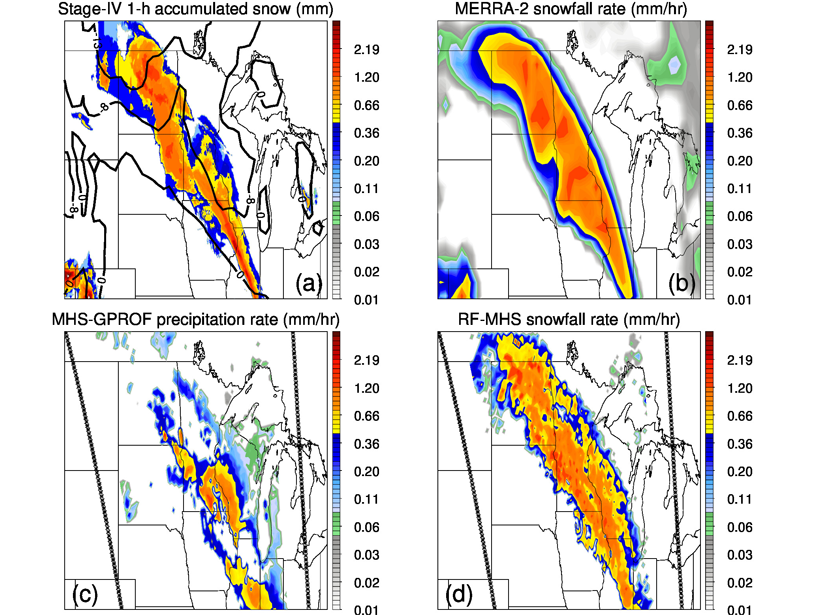Source: Earth and Space Science
Global snowfall measurement is important for hydrologic applications and to understand global energy and water cycles. Satellite-based observation from CloudSat radar has provided global snowfall estimates with relatively high quality. However, CloudSat has limited lifespan and a relatively poor temporal sampling, restricting its application for long-term snowfall monitoring.
Using coincident observations between microwave humidity sounder (MHS) and CloudSat snowfall, Adhikari et al. [2020] utilize a machine learning approach to estimate global snowfall occurrence and rate from MHS, offering much higher temporal sampling and longer record than CloudSat. The estimated snowfall compared well with independent CloudSat data and outperformed that from the Atmospheric Infrared Sounder (AIRS) used in the Global Precipitation Climatology Project (GPCP) product and the current precipitation estimate from MHS using the Goddard Profiling Algorithm (GPROF) approach.
Citation: Adhikari, A., Ehsani, M. R., Song, Y., & Behrangi, A. [2020]. Comparative assessment of snowfall retrieval from Microwave Humidity Sounders using machine learning methods. Earth and Space Science, 7, e2020EA001357. https://doi.org/10.1029/2020EA001357
—Jonathan H. Jiang, Editor, Earth and Space Science
Text © 2020. The authors. CC BY-NC-ND 3.0
Except where otherwise noted, images are subject to copyright. Any reuse without express permission from the copyright owner is prohibited.

